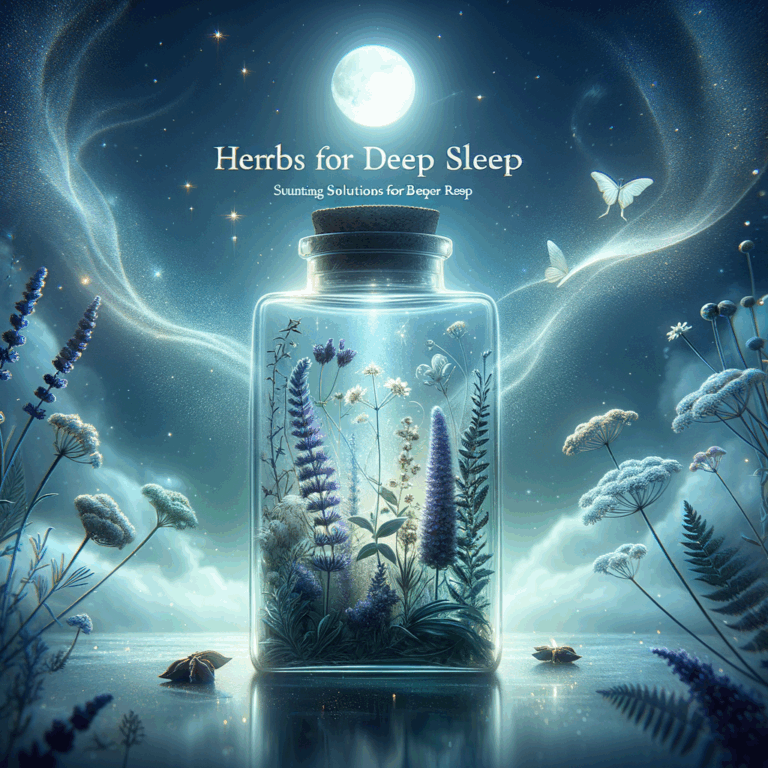
- Understanding Menstrual Cramps: The Pain You Don't Have to Endure
- The Power of Herbal Remedies
- Top Herbal Choices for Menstrual Cramp Relief
- 1. Ginger
- 2. Peppermint
- 3. Chamomile
- 4. Cramp Bark
- 5. Dong Quai
- How to Create Delicious Herbal Teas
- Basic Tea Recipe
- Lifestyle Changes for Menstrual Cramp Management
- Diet
- Hydration
- Regular Exercise
- The Role of Essential Oils
- Combining Herbs for Enhanced Effects
- Precautions When Using Herbs
- Creating Your Herbal Toolkit
- Real-Life Success Stories
- Frequently Asked Questions
- Conclusion
- References
Understanding Menstrual Cramps: The Pain You Don’t Have to Endure
Menstrual cramps, often termed dysmenorrhea, can range from mild discomfort to severe pain. Many women experience cramps just before or during their menstrual cycle. This discomfort occurs as the uterus contracts to help shed its lining. While some cramping may be normal, others find it can disrupt daily life. Thankfully, nature has equipped us with a range of menstrual cramp herbs that offer effective relief without the side effects associated with pharmaceuticals.
It’s essential to recognize that each woman’s body is unique. What works for one person may not work for another. The following guide explores various herbs, their benefits, and how they can help you find that much-needed relief during your menstrual cycle.
The Power of Herbal Remedies
Herbal remedies provide a natural alternative to over-the-counter pain relievers. They often come with fewer side effects. Many herbs have anti-inflammatory properties, helping to ease both pain and discomfort. By harnessing these natural solutions, women can often manage cramps more effectively.
A growing number of studies indicate that certain herbs can reduce menstrual pain. By understanding how some of these herbal options work, you can make informed choices about your health. Let’s dive into some of the most effective menstrual cramp herbs and explore their properties and benefits.
Top Herbal Choices for Menstrual Cramp Relief
1. Ginger
Ginger is a well-loved spice known for its anti-inflammatory properties. Research shows that ginger can effectively alleviate menstrual pain. It works by inhibiting the production of prostaglandins, compounds that cause uterine contractions and pain.
How to Use:
– Brew fresh ginger tea by boiling slices of ginger root in water.
– Add honey for taste and consume two to three times daily during your cycle.
2. Peppermint
Peppermint is another excellent option for menstrual cramps. This herb contains menthol, which provides a cooling sensation and can relieve muscle tension and pain. The calming effect of peppermint can also help reduce stress, leading to a more comfortable experience during periods.
How to Use:
– Drink peppermint tea or inhale its aroma using essential oil.
3. Chamomile
Chamomile is celebrated for its calming effects. This herb has anti-inflammatory and antispasmodic properties, helping ease muscle spasms associated with cramping. Using chamomile can also help promote relaxation, which is beneficial during stressful times.
How to Use:
– Prepare chamomile tea and consume it before and during your period.
4. Cramp Bark
As the name suggests, cramp bark has been traditionally used for menstrual cramps and other muscle-related issues. The active constituents in cramp bark can relax uterine muscles, reducing cramp intensity.
How to Use:
– You can find cramp bark in tincture or tea form. Follow package instructions for dosage.
5. Dong Quai
Dong Quai, often referred to as “female ginseng,” is a powerhouse herb in Traditional Chinese Medicine. It is known for its ability to balance hormones and improve blood circulation. Some studies indicate that it can help relieve menstrual discomfort.
How to Use:
– Dong Quai comes in capsules, powders, and teas. Consult with a healthcare provider to find the right dosage for you.
How to Create Delicious Herbal Teas
Creating herbal teas can be a delightful way to experience relief while enjoying a warm beverage. Here’s a simple guide to preparing herbal teas:
Basic Tea Recipe
1. Choose your herb (e.g., ginger, chamomile, peppermint).
2. Measure one tablespoon of dried herb (or two tablespoons of fresh herb).
3. Boil 8 ounces of water.
4. Pour the boiling water over the herb in a tea infuser or directly in a teapot.
5. Let steep for 5-10 minutes, then strain and enjoy.
Lifestyle Changes for Menstrual Cramp Management
In addition to herbal remedies, adopting healthier lifestyle choices can significantly improve your experience during your menstrual cycle. Implementing simple changes can enhance overall well-being and reduce cramp severity. Here are some areas to consider:
Diet
Eating a well-balanced diet rich in fruits, vegetables, whole grains, and lean proteins can help maintain hormonal balance. Foods high in omega-3 fatty acids, like salmon and walnuts, can also reduce inflammation.
Hydration
Staying hydrated is crucial. Water helps maintain muscle elasticity and reduces tension. Aim for at least eight glasses of water daily, especially during your cycle.
Regular Exercise
Physical activity can boost endorphin production, acting as natural pain relievers. Engaging in yoga or light cardio during your period can relax the body and relieve cramps.
The Role of Essential Oils
Essential oils can complement herbal remedies effectively. Aromatherapy can provide relaxation and pain relief. Some popular essential oils for menstrual efficiency include:
– Lavender: Known for its calming properties, it can help reduce tension.
– Clary Sage: This oil has balancing effects on hormones.
– Bergamot: Offers mood enhancement and relief from stress.
How to Use:
– Try diffusing essential oils in your space or applying diluted oils to pulse points for relief.
Combining Herbs for Enhanced Effects
Combining beneficial herbs can maximize their effects. For instance, mixing ginger and peppermint can create a powerful blend that eases cramps and digestion. Here’s a quick recipe:
Ginger-Peppermint Blend:
– Steep one teaspoon of grated ginger and one teaspoon of dried peppermint in boiling water for 10 minutes. Strain and enjoy.
Precautions When Using Herbs
While herbs can provide relief, it’s important to use them with caution. Not every herb suits every individual, and certain herbs may interact with medications. Always consult with a healthcare provider before starting any new herbal regimen.
Here are some points to consider:
– Quality matters: Use herbs from reputable sources to ensure safety and efficacy.
– Moderation is key: Excessive use of herbs may cause adverse effects.
– Listen to your body: Monitor how you feel after using a new herb and discontinue if you experience negative effects.
Creating Your Herbal Toolkit
Building an herbal toolkit can empower you during your menstrual cycle. Having essential herbs on hand prepares you for when cramps strike. Here’s a simple checklist to start your toolkit:
| Herb | Form | Use |
|—————–|———————|———————|
| Ginger | Fresh, dried, or tea | Relieve cramps |
| Peppermint | Tea or essential oil | Soothe tension |
| Chamomile | Tea or capsules | Relax the body |
| Cramp Bark | Tincture or tea | Reduce muscle spasms |
| Dong Quai | Capsules or tea | Balance hormones |
Real-Life Success Stories
Hearing from others who have turned to herbal remedies can be inspiring. Many women have found relief through holistic approaches. Some have successfully integrated these herbs into their routines, often reporting shorter, less painful periods. These testimonials remind us of the potency of nature in supporting our health.
Frequently Asked Questions
1. Can I combine different herbs for menstrual cramps?
Yes! Combining herbs like ginger and peppermint can enhance their effects.
2. How long does it take for herbal remedies to work?
Herbal remedies may take longer to show effects, but many women notice relief within a few days to a week.
3. Can herbs replace medication for menstrual pain?
Herbs can be an effective alternative but consult with your healthcare provider before making any changes to your medication routine.
4. Are there any side effects of herbal remedies?
Some herbs may cause side effects if overused. For example, ginger can cause gastrointestinal issues in high doses.
5. Can I take herbal remedies during pregnancy?
Some herbs are not safe during pregnancy. Always consult your doctor before using any herb while pregnant or breastfeeding.
6. How can I prepare herbal remedies at home?
Creating herbal teas is easy. You brew herbs in hot water, let them steep, and then enjoy.
7. Can stress impact menstrual cramps?
Absolutely. Stress can increase tension in the body, leading to more severe cramps.
8. Are there specific herbs for those with heavy bleeding?
Yes, certain herbs like shepherd’s purse may be beneficial for managing heavy menstrual bleeding.
9. Can I find these herbs in health food stores?
Most of these herbs are available at health food stores or online retailers. Check labels for quality.
10. How do I know which herb is right for me?
Individual responses to herbs vary. It may take some experimentation, and consulting a healthcare provider can help you navigate this.
Conclusion
Menstrual cramps can be a significant challenge, but they don’t have to ruin your days. By utilizing menstrual cramp herbs and making small lifestyle adjustments, you can find effective relief. Whether through herbal teas, essential oils, or dietary changes, nature offers a variety of ways to support your cycle. Always listen to your body and consult a healthcare provider before starting any new remedy. Empower yourself with knowledge, and let these natural solutions guide you toward pain-free days.
References
– U.S. National Library of Medicine (https://medlineplus.gov)
– Healthline (https://www.healthline.com)
– American Herbalists Guild (https://www.americanherbalistsguild.com)
– WebMD (https://www.webmd.com)
– Mayo Clinic (https://www.mayoclinic.org)
By embracing these natural options, you take charge of your health and well-being, paving the way for more comfortable menstrual experiences.



